Seip Mound State Memorial Park is one of the five noncontiguous sites that make up the Hopewell Culture National Historical Park. The other four sites are Hopeton Earthworks, Hopewell Mound Group, High Banks Works, and the Mound City Group (reviewed by us here). Native Americans belonging to the Hopewell tradition constructed this mound sometime between 100 B.C. – A.D. 400.
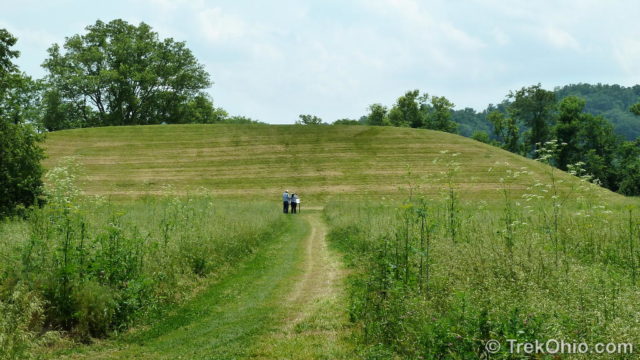
The mound pictured above was part of a larger earthworks complex. At a number of sites in Ohio, Native Americans of this era constructed earthen walls in the shape of immense, geometric shapes, typically consisting of two circular figures and a square. To give you an idea of the size, the embankment walls were 10,000 feet in length and enclosed 121 acres. When surveyed in 1848, the Seip Earthworks looked like the illustration below.
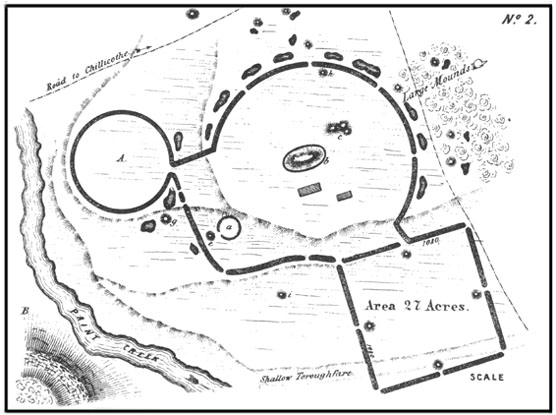
Local farmers leveled most of the wall to create fields. However two huge, elliptical mounds remained intact until archeologists excavated them in the 1920s. When I say that the mounds were excavated, I mean that archeologists completely dug them up and sifted through the dirt to remove artifacts and skeletal remains. So the mound that you now see when visiting this site is actually a reconstruction of Seip Earthwork’s largest mound. It is described by E.G. Squier (the man who surveyed it in 1848) as being 240 feet long, 160 feet wide, and 30 feet high. Although the outer surface of the reconstructed mound is soil on which grass grows, Squier described the original mound as having a surface consisting of small rocks and pebbles. Squier also said that there were three beautiful mounds made entirely of clay in the vicinity. These have long since disappeared.
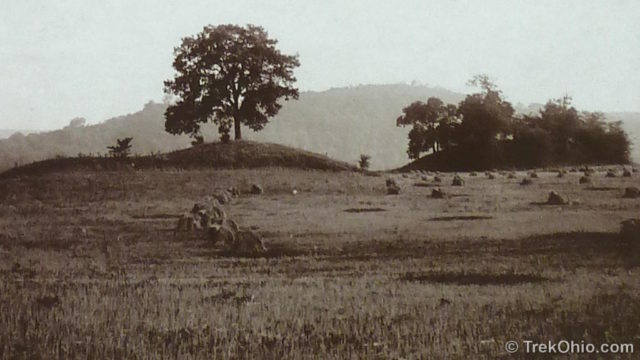
All the mounds within the Seip Earthworks were used to inter the remains of individuals, most of whom had been cremated. However at the base of one of the two great mounds in the large circle’s center, there was a log crypt. The remains of the people who had been laid to rest within the crypt appear to have been treated differently from others. The crypt contained the remains of four adults who were lying side by side on their backs. Above their heads at a 90 degree angle with respect to the adults were the remains of two infants. This burial chamber contained thousands of pearls, so many that newspaper accounts of the era referred to the tomb as the “great pearl burial”. Many other fine artifacts were also interred in this chamber.
The individuals in the crypt apparently wore or were draped with a linen burial shroud. At the time of the excavation this linen was said to resemble the weave, texture, and color of pioneer-style, homespun linen. I used to imagine woodland Indians dressing exclusively in leather and animal skins. However early settlers have described the Native Americans of their era as wearing colorful fabrics. The Hopewell Indians lived over a thousand years before these settlers, but apparently even their fabric employed colorful dyes. Scientists are now using techniques developed in forensic laboratories to learn more about the colors and dyes used on these ancient textiles.
It is very surprising that any cloth was preserved underground over a dozen centuries, however both the burial shrouds and an additional sample of linen that was part of a votive offering were preserved because they laid directly beneath copper breast plates.
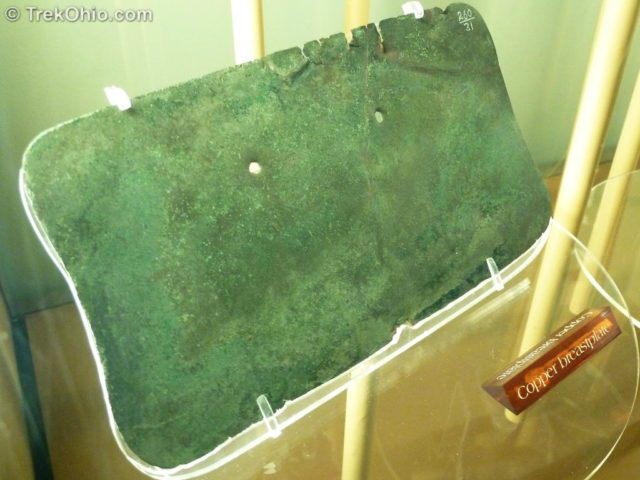
As I mentioned earlier, the textiles, pearls and other precious items were discovered in a log crypt at the base of the mound. However the logs rotted causing the crypt to collapse and the top of the mound to sink in. The Hopewell Indians built a secondary mound over the original mound apparently to restore the mound’s shape.
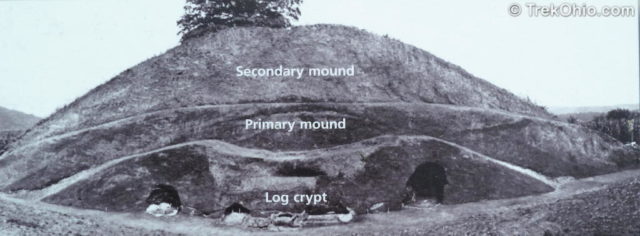
Besides the remains of the people within the log crypt, the remains of many other people were interred in and around the Seip Earthworks. According to an article in the Midcontinental Journal of Archaeology, an analysis of the remains of 87 individuals from one mound revealed that both males and females of all ages were laid to rest at this site, and this cemetery was populated over a relatively brief period of time.
There is evidence that a number of wooden buildings stood at this site. Archeologists have concluded that these were not used as housing because there is no sign of hearths or garbage dumps nearby. So they concluded that these buildings served as workshops where artisans made some of the artifacts found within the tombs. However recently this theory has been discredited because only a small number of the tools found in the area show signs of use wear. Archeologists now believe that the wooden buildings must have been used for rituals whose purpose will remain a mystery.
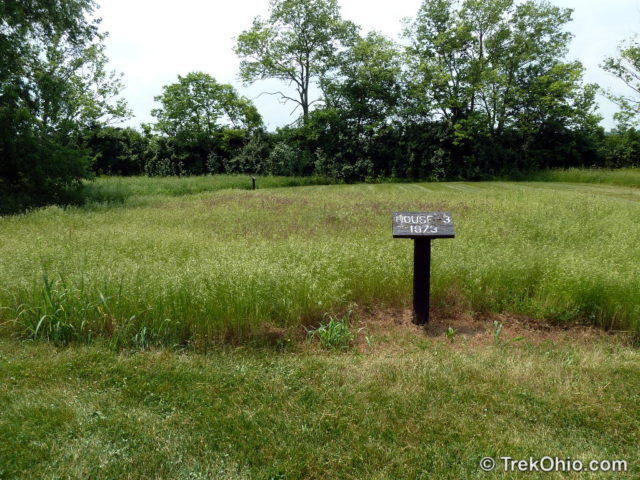
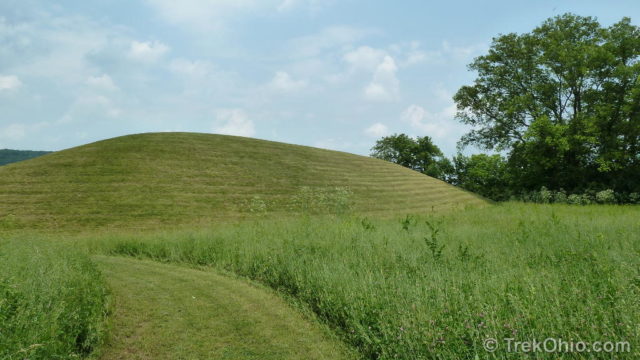
In addition to the large mound and a small portion of the earthen perimeter wall, the park also includes a large field with a mown path that leads around it. With the help of volunteers the park intends on transforming the field into a prairie in which only native plants grow.
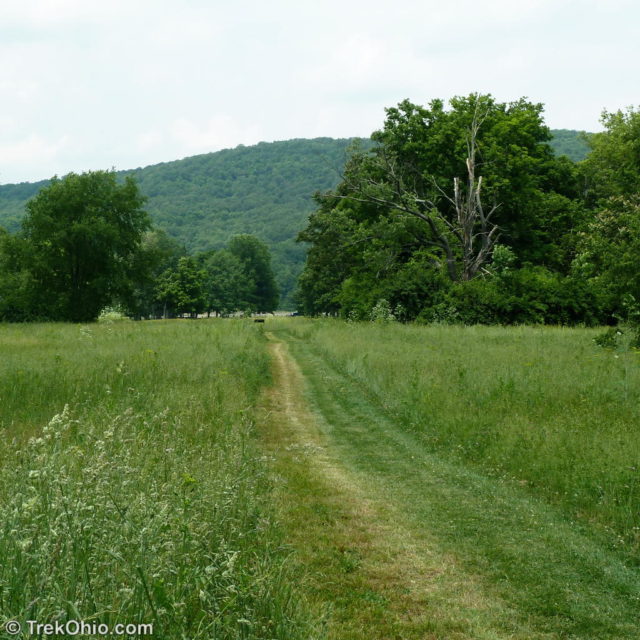
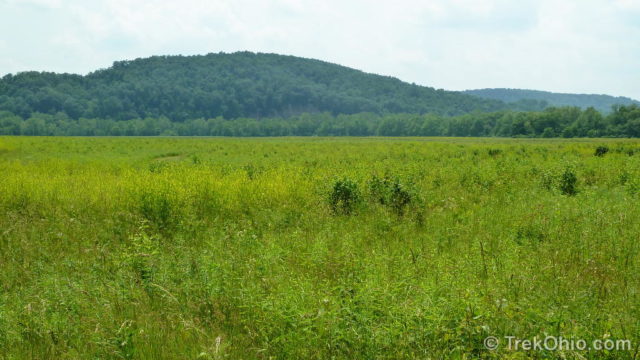
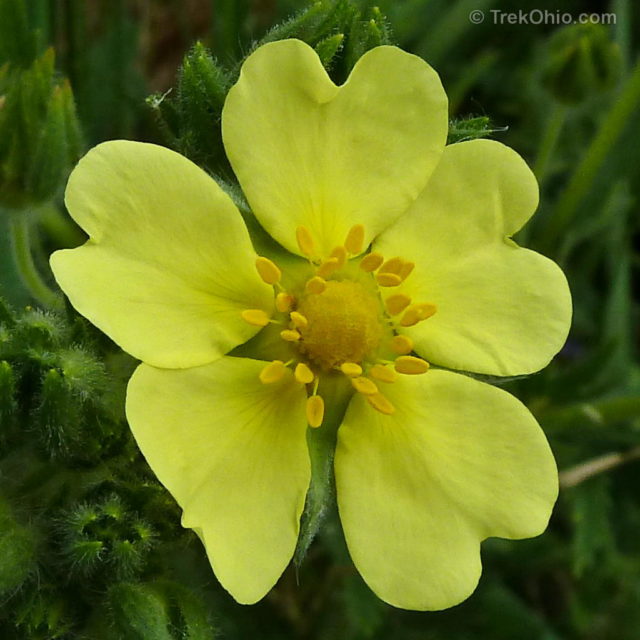

Additional information
- Seip Earthworks, published by the National Park Service
- Seip Mound and Earthworks, published by the Ohio Historical Society
- Virtual First Ohioans >> Seip Mound, published by the Ohio Historical Society
- The Seip Group, published at ScienceViews.com (this is the source in which I learned about the Native American linen)
- Forensic photography brings color back to ancient textiles, published at Phys.org
- Forensic Photography Brings Color Back To Ancient Textiles, published by the Ohio State University
- Focus On Research: The Seip Mound Houses, published at the Ohio Archaeology Blog
- Hopewell Tradition, published at Wikipedia
Location
Seip Mound is 14 miles southwest of Chillicothe and two miles east of Bainbridge, on U.S. Route 50 in Ross County.
Nearby
Unless you do the walk around the field, you can view Seip Mound and its surroundings relatively quickly. If you’ve driven a ways to get to this area, why don’t you consider checking out some of the nearby attractions?
- Mound City Group of the Hopewell Culture National Historical Park, reviewed by us here
- Paint Creek State Park
- Scioto Trail State Park, reviewed by us here
- Adena Mansion and Gardens
More on Native American History
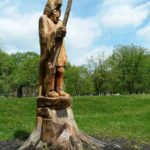
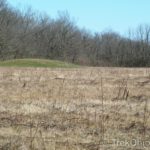
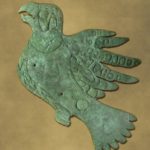
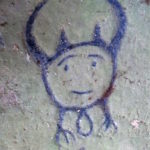
The problem is that the scientific world does not accept that we have had humans of larger size than we have today. Even if you can find about 1000 old newspaper articles from the US alone telling about the enormous bones found in the mounds. I am after proof! And it is very hard to find out what has happened to the remains. Most often I do not get any replies on my emails or at comments like this. Here are my web pages: http://www.sydhav.no/giants/giants.htm
I have seen a picture of the four adult skeletons found in the vault (in the primary Pricer mound) – they look very, very large! Know anything about this? Please mail me [redacted]…
Actually I was not aware of this, but after seeing your comment I started doing a little research on it. I found a Facebook page that I think you would find interesting: Stone Builders, Mound Builders and the Giants of Ancient America. If you look at the photos published by this page, many are old newspaper accounts of giant skeletons unearthed in North America.
I’m always so fascinated by these burial mounds… Thanks so much for portraying such a clear and detailed synopsis of this one (as well as the beautiful photographs!). Can you imagine what they would have looked like, if the incoming farmers hadn’t leveled most of the structures? I love the different angles you provide, too… Gives a sense of the place.
Thanks, FeyGirl. As hard as it to imagine what life was like then, I think it would have been even harder for the people of that era to imagine what would later transpire on their land. I would guess that they just assumed their culture would continue forever. Think how foreign their homeland would seem if they could see it now.
Exactly… Just like our own present peoples!
I’m always picturing life as it may have been, during our hikes — and I’m constantly in awe. I would think that past cultures (well, some perhaps) would be saddened by our lost connection to the earth — which I have hope is growing once again…
When I was a child we stopped frequently at Seip Mound because it was a convenient restroom stop between our house outside of Greenfield and Chillicothe. Plus my dad was a history nut. At that time, 1960’s/70’s, we would climb to the top of the mound and there was a path worn into the middle of the front as many people climbed up there also. That may be prohibited now. Once I got old enough to study the map as you published above I tried hard to imagine the site as it was. It’s very hard based on what it looks like today. Most people pass up this park because it doesn’t look like much. Hopefully your post will alert those interested in Ohio history to it’s importance. I love the idea that they are planting the grounds in prairie plants, too.
I think it’s cool that your dad was a history buff. Learning about history by visiting places is fun way to do it. Still in a place as ancient as this it can be hard to imagine what it was like, just as you said.
When we were at Seip Mound, there were no restroom facilities, but there were at the nearby Mound City Group.
I can’t remember a specific prohibition against walking on the earthworks at Seip Mound, but I would imagine that there is a sign somewhere. Every other place I’ve gone to with Native American Earthworks has a sign saying to stay off the earthworks either to reduce erosion or to be respectful. However when I was looking around the Internet for additional information on Seip Mounds, I ran into this video of Flash and Sparky (and their owners) on top of the mound: http://youtu.be/TmeaDYCsajY
I’m always so impressed by the photos and the excellent writing on your blog. Such a great job and so much interesting information…thanks! And you know I LOVE that photo of the yellow blossom! It’s my favorite of this group of photos. 🙂
Thanks, Carol. I thought that the petals of the flower looked liked yellow, valentine hearts. 🙂
You’re right…they do. So pretty.